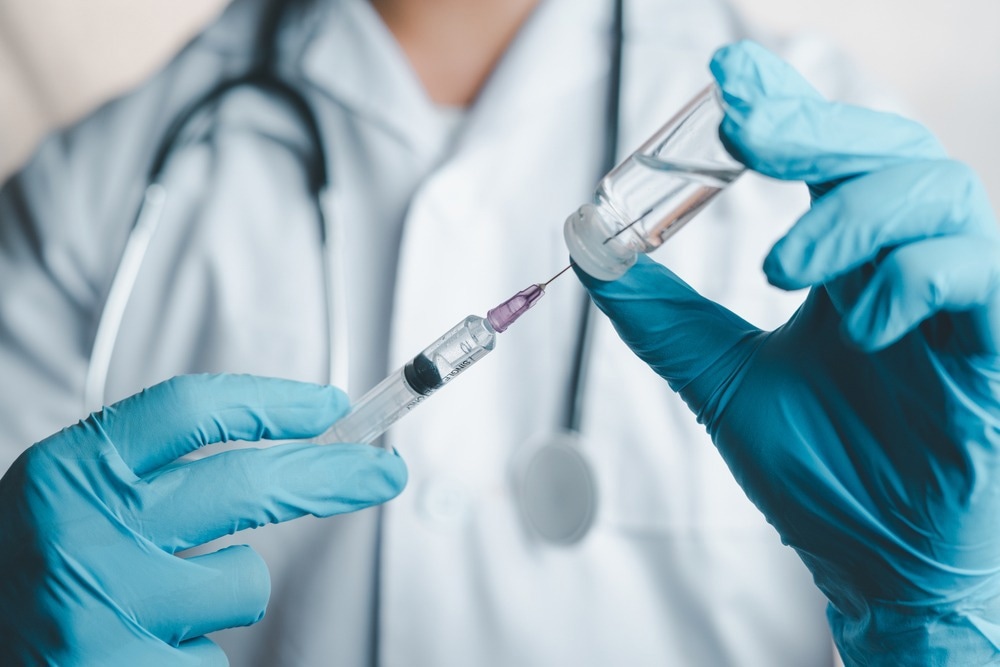In a recent study published in Emerging Infectious Diseases, researchers assessed the effects of two-dose coronavirus disease 2019 (COVID-19) vaccinations on household severe acute respiratory syndrome coronavirus 2 (SARS-CoV-2) transmission among British residents.
 Study: Effects of Second Dose of SARS-CoV-2 Vaccination on Household Transmission, England. Image Credit: THEBILLJR/Shutterstock
Study: Effects of Second Dose of SARS-CoV-2 Vaccination on Household Transmission, England. Image Credit: THEBILLJR/Shutterstock
Background
In an earlier study, the authors of the present study analyzed the HOSTED (household transmission evaluation dataset) and observed lower odds of SARS-CoV-2 infection among non-vaccinated household contact individuals of one-dose vaccinated COVID-19 cases compared to those for non-vaccinated household contact individuals of non-vaccinated COVID-19 cases during SARS-CoV-2 Alpha variant dominance.
About the study
In the present study, researchers extended their previous analysis by evaluating the effects of two-dose vaccinations against transmission of SARS-CoV-2 to household contact individuals during the period of Delta variant dominance in England.
HOSTED data of RT-PCR (reverse transcription polymerase chain reaction) analysis-confirmed and LFD (lateral flow device) assay-confirmed COVID-19 cases reported to national surveillance systems were analyzed.
The HOSTED dataset was linked to England’s national immunization management system data to extract information on the types [AstraZeneca’s ChAdOx1, Pfizer-BioNTech’s BNT162b2, or Moderna’s messenger ribonucleic acid (mRNA)-1273 (Moderna)], dates and number of COVID-19 vaccine doses administered. The COVID-19 cases were linked to UPRNs (unique property reference numbers) through health records.
The study outcome was household contacts of two-dose vaccinated index cases becoming secondary COVID-19 cases, compared to those of non-vaccinated index cases. The team included only locations comprising two to 10 residing individuals. Index COVID-19 cases’ household contacts with sample collection data between 1 February 2021 and 13 September 2021 were included for the analysis.
Secondary COVID-19 cases were described as known household contacts of index COVID-19 cases with SARS-CoV-2-positive reports for samples obtained two days to two weeks following sample collection for the index case. The team excluded institutional, residential settings such as prisons and care homes. Cox regression modeling was used, and the HR (hazard ratios) were calculated after data adjustments for contact, socioeconomic status, and sex.
Households with index cases aged below 16 years in the United Kingdom (UK) Pillar 1 system, comprising largely hospitalized individuals, and those ineligible for COVID-19 vaccination were also excluded from the analysis. Sensitivity analyses were performed by including only non-vaccinated household contacts and by excluding individuals (index cases or household contacts) who did not receive COVID-19 vaccinations by 13 September 2022.
Results
Initially, the sample population consisted of index COVID-19 cases (n=1,779,448 individuals) from unique households (n=1,535,288 individuals) and household contacts (n=4,110,051 individuals). The team excluded households with 1,265,196 pediatric index COVID-19 cases, 99,627 UK pillar 1 index cases, 785,669 co-prime index COVID-19 cases, and residents (n=194,160) vaccinated prior to the national vaccine rollout (prior to January 2021). Further, individuals with indeterminate vaccination status were excluded, and as a result, 606,720 and 1,440,269 index cases and household contacts, respectively, were analyzed.
The median values for index case age and contact age were 35 and 32, respectively, and 51% and 49% of the corresponding participants were female. In total, 122,423 (9.0%) secondary COVID-19 cases among household contacts were analyzed. The majority of secondary COVID-19 cases were identified between February and May 2021, and most secondary COVID-19 cases were identified in households of non-vaccinated index COVID-19 cases.
More secondary cases were observed among contacts of ChAdOx1-vaccinated and BNT162b2-vaccinated index cases, and after June, most secondary COVID-19 cases were observed among household contact individuals of index COVID-19 cases who received ChAdOx1 vaccines. Secondary COVID-19 cases among contact individuals of index COVID-19 cases who received mRNA-1273 vaccines were persistently low, albeit limited data was available.
HR values for the study outcome were 0.2 for individuals residing in households of index COVID-19 cases who received two-dose BNT162b2 vaccines and 0.5 for individuals residing in households of index COVID-19 cases who received two-dose Ch4dOx1 vaccines during Alpha variant dominance, compared with contacts of non-vaccinated cases. HRs obtained during the period of Delta variant dominance were 0.7 and 1.1 for BNT162b2 and Ch4dOx1 vaccinees, respectively. Reduction in onward SARS-CoV-2 transmission was lesser for index COVID-19 cases testing SARS-CoV-2-positive ≥2.0 months after the second dose of either of the vaccines.
Conclusions
Overall, the study findings showed that two-dose mRNA vaccinations among index COVID-19 cases lowered onward SARS-CoV-2 transmission to non-vaccinated household contacts during Delta variant predominance periods, compared to the Alpha variant predominant period. During Alpha variant predominance, one-dose ChAdOx1 or mRNA vaccine reduced SARS-CoV-2 transmission to an equivalent extent.
In addition, the waning of vaccine-conferred humoral immunity was observed over time. The study findings highlighted the variation in immunity conferred by vaccinations related to SARS-CoV-2 transmission effects caused by emerging SARS-CoV-2 variants and waning immune protection. The findings also underscored the need for monitoring such effects to guide the development of COVID-19 vaccination strategies.